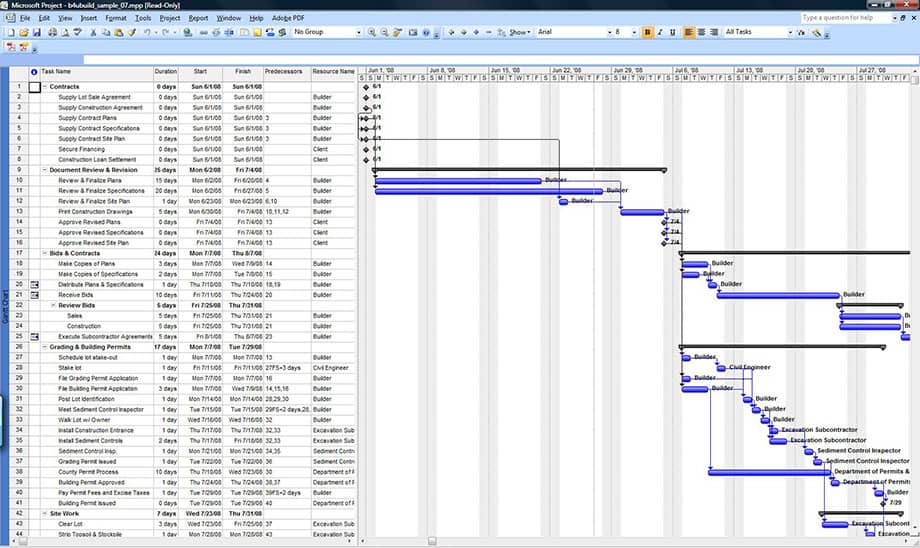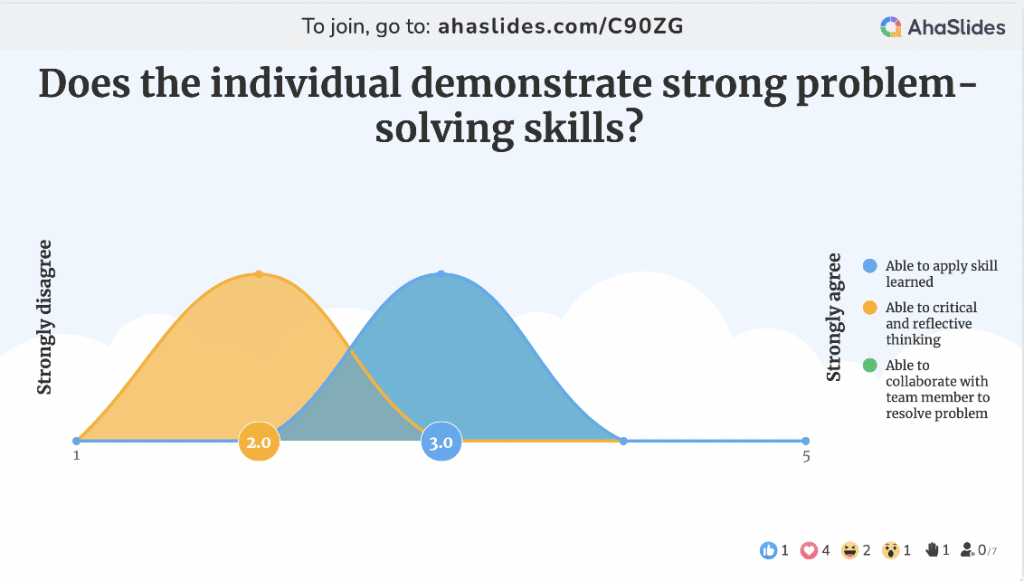Project Schedule Examples | Best Practice in 2025
Learn from these best project schedule examples to enhance the productivity and performance of your projects!
The first step of project management comes with planning and scheduling; while planning is focused on establishing a roadmap for project success, scheduling is dedicated to defining the timeline and sequence of project activities.
It is hard to ensure the project to work in progress without the scheduling phase. Thus, in this article, we'll explore the importance of a project schedule, its examples, and how to schedule from a small to a large-scale project effectively.

Table of Contents
What Does the Project Schedule Mean?
A project schedule is a detailed timetable that outlines tasks, required resources, and expected deadlines in a sequence to ensure that a project can be finished on time.
A project schedule typically includes each task's start and end dates, the duration of each task, and any dependencies or constraints that may impact the schedule.
Why is the Project Schedule Important?
Project scheduling is a crucial component of project management as it provides a framework for the successful execution of a project. This detailed plan allows project managers to effectively allocate resources, monitor progress, and ensure that the project is completed on time and within budget. Some benefits of the project schedule are described as follows
Identifying Potential Bottlenecks And Risks in Advance
One of the key reasons why project scheduling is important is that it supports managers in figuring out potential bottlenecks and risks in advance. By breaking down the project into smaller tasks and assigning specific timelines to each task, project managers can easily identify any dependencies or constraints that may impact the overall timeline of the project. This enables them to proactively manage these risks and take necessary actions to mitigate them.
For example, if a particular task is identified as a critical path activity and its delay could potentially impact the entire project timeline, the project manager can allocate additional resources or adjust the schedule to ensure timely completion.
Leveraging Resources
Furthermore, project scheduling plays a vital role in resource management. By having a clear understanding of the tasks involved in a project and their estimated durations, project managers can effectively allocate resources to ensure that they are optimally utilized.
This includes assigning the right people with the necessary skills and experience to each task and avoiding resource conflicts or overloading. A well-planned project schedule allows project managers to identify any resource gaps or shortages in advance and take necessary actions to address them, such as hiring additional resources or reallocating existing ones.
Enhancing communication and coordination
In addition, project scheduling helps in improving communication and collaboration among team members. By having a shared understanding of the project schedule, team members can align their efforts and work towards a common goal. This facilitates better collaboration, reduces misunderstandings or conflicts, and improves overall productivity.
Better tracking and reporting
Moreover, a well-defined project schedule also provides a basis for regular progress tracking and reporting. Project managers can compare actual progress against the planned schedule, identify any deviations or delays, and take necessary corrective actions to keep the project on track.
What are Project Schedule Examples?
Here are some examples of how a project schedule can be created based on three project scheduling and controlling techniques: Gantt chart, network diagram (PERT and CPM), and Work Breakdown Schedule (WBS).
Gantt chart
A Gantt chart is a popular project scheduling tool that visually represents the project timeline. It displays tasks as horizontal bars along a timeline, with their start and end dates. Dependencies between tasks can be indicated using arrows, and milestones can be marked to signify significant project achievements.
The following picture is an example of a Gantt chart of service activities for a Delta Jet during a 40-minute layover

PERT and CPM
A network diagram, also known as a PERT (Program Evaluation and Review Technique) chart, illustrates the sequence and dependencies of tasks in a project. It uses nodes to represent tasks and arrows to depict the relationships between tasks. This type of schedule is useful for visualizing critical paths and identifying the tasks that have the greatest impact on project duration.
In addition, the critical path is identified by determining the longest sequence of dependent tasks that directly impact the project's overall duration. Tasks along the critical path have zero slack or float, meaning any delay in these tasks will directly impact the project's overall duration. By focusing on the critical path, project managers can allocate resources effectively and identify opportunities for optimization to ensure timely project completion.
Here is an example of Critical Path and Slack Times to install the new pollution control equipment of a given company.

Work Breakdown Schedule (WBS)
A project schedule can be developed using the Work Breakdown Structure as a foundation. It refers to a hierarchical decomposition of the project deliverables into smaller, manageable work packages. By using these techniques, managers can easily identify the dependencies between the tasks. Some tasks may be dependent on the completion of others, while some can be worked on concurrently.
How to Make a Project Schedule
At the beginning of scheduling, if you are wondering how to get it on, it can be helpful to follow these important questions:
- What needs to be done? Clearly define the specific tasks, activities, and deliverables required to complete the project. Break down the project into manageable components, ensuring that all necessary work is identified.
- When should it be done? Determine the duration and timeline for each task or activity. Estimate the time required to complete each task and consider any dependencies or constraints that may impact the schedule. Using Gantt chart, PERT, and CPM techniques to help organize the project schedule efficiently.
- Who can do it? Identify the individuals or roles responsible for each task or activity, it might involve cross-departmental support. Assign resources and allocate responsibilities accordingly. Ensure that team members have the necessary skills and availability to carry out their assigned tasks.
- Where will it be done? Determine the physical or virtual location where each task will be performed. This may include specific workspaces, equipment, or technology requirements.
- What are the task dependencies? Determine the relationships and dependencies between tasks. Identify which tasks need to be completed before others can start, and consider any tasks that can be worked on concurrently.
- What is the Critical Path? Identifying the critical path is an important part of developing a comprehensive project schedule. The critical path helps project managers and teams understand which tasks have the greatest impact on the project's duration and completion date.
What are Project Schedule Tools?
Most projects nowadays need the support of project scheduling software. It has been proven to bring many benefits to individuals and businesses such as increased efficiency, improved collaboration, enhanced accuracy, and better visualization.
Microsoft Project is one of the best project scheduling software. One of the key features of Microsoft Project is its ability to get status updates to stakeholders and manage Gantt charts, where you can easily identify task dependencies and manage the sequencing of tasks. you also can flexibly make adjustments to the project schedule.
Another option is using a tool called Primavera P6 scheduling software. It is a comprehensive project management software specifically designed for large-scale and complex projects and is recognized as one of the best construction scheduling software. It supports both PERT and CPM techniques, offering features for creating network diagrams, scheduling tasks, managing resources, and analyzing critical paths.
For smaller projects, you can consider trying free software like "Asana" or "Trello." While these tools may not have all the advanced features of paid software, they offer basic project scheduling capabilities and are user-friendly. Free versions are capable of completing less complicated project tasks and collaborating with others. It allows you to create tasks, set due dates, assign responsibilities, and track progress.

Frequently Asked Questions
What is project scheduling for example?
A project schedule outlines the sequence of tasks, resources required, and the estimated timeframes for their completion. Take a construction project as a project schedule example. Scheduling in construction may include tasks such as site preparation, foundation work, framing, electrical and plumbing installations, finishing, and inspections.
How do you write a project schedule example?
When writing a project schedule example, it is important to follow these steps: (1) Start by identifying the key tasks and activities that need to be completed for the project. This can be done by breaking down the project into smaller, manageable tasks and determining the sequence in which they need to be completed. (2) Next, estimate the duration of each task and allocate resources accordingly. This will help in creating a realistic timeline for the project. (3) Following by establishing dependencies between tasks, as some tasks may be dependent on the completion of others. (4) Finally, remember to regularly review and update the project schedule as needed to ensure that it remains accurate and reflects any changes or adjustments in the project.
What are the 7 different types of scheduling?
Seven different types include Time-slot scheduling, Open appointment scheduling, Wave scheduling, 40/20 scheduling, Double scheduling, Cluster scheduling, Wave and walk-in appointment scheduling and Matrix scheduling.
Bottom Line
A well-developed project schedule is crucial for successful project management. To excel in project scheduling for the year 2024 and beyond, it is recommended to explore and adopt modern project management tools, stay informed about industry best practices, and continually enhance project scheduling skills through training and professional development.

Ref: Project Manager | Verint